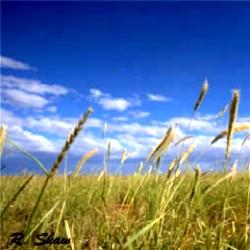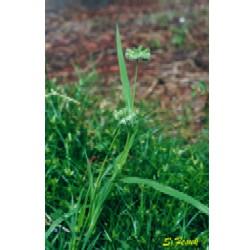Grasping Grass
Published on 23 August, 2002
A lot of turf has been covered in 18 months to develop an interactive CD that identifies and fully describes 85 of the 300 native grasses of the Northern Territories.
"Pastoralists, landcare groups, mining companies, shire councils, even interested home-owners will all find the colour pictures and data useful," said Sam Fesuk of Central Queensland University's (CQU) Plant Sciences Group. Fesuk and a CQU researcher Dr Nanjappa Ashwath collaborated with Greening Australia Northern Territories and native grass expert Russell Shaw of the Katherine Rangeland Revegetation Centre to produce the unique multimedia field guide.
 "Grasses of NT is for the layperson and provides the information most people need," explained Fesuk. "There's no other guide at the moment like it." With support from the Victoria River District Conservation Association, Australian National Botanical Gardens, private pastoral companies and others, Fesuk was able to compile the taxonomical research and gather details on protein rates of grass, sowing rates and market price. "Some grasses are better to rehabilitate abused land, some will reinforce river banks or stabilise railway embankments, some are better for cattle feed and some make nice garden ornamentals - that's the sort of facts we put on the CD," continued Fesuk.
"Grasses of NT is for the layperson and provides the information most people need," explained Fesuk. "There's no other guide at the moment like it." With support from the Victoria River District Conservation Association, Australian National Botanical Gardens, private pastoral companies and others, Fesuk was able to compile the taxonomical research and gather details on protein rates of grass, sowing rates and market price. "Some grasses are better to rehabilitate abused land, some will reinforce river banks or stabilise railway embankments, some are better for cattle feed and some make nice garden ornamentals - that's the sort of facts we put on the CD," continued Fesuk.
And the grasses vary from stubby to graceful, from wide green blades to tall yellow stalks, to plants you may not even think were grass. "Katherine Sorghum (Sorghum macrospermum) up to 4m in height is about the tallest in NT, and Button Grass (Dactyloctenium radulans), less than 30 cm tall, would rate amongst the shortest," Fesuk commented.
 With more than 200 grasses still to be catalogued, CQU is also conducting a lengthy study that will ultimately yield the development of an identification guide to more than 3000 species of native plants in Central Queensland.
With more than 200 grasses still to be catalogued, CQU is also conducting a lengthy study that will ultimately yield the development of an identification guide to more than 3000 species of native plants in Central Queensland.
The user-friendly CD (PC format only, not MAC as yet), written in easy to understand English, includes photographs, fact sheets and distribution maps for each grass species. Version 1.0, which will be updated as more plants are catalogued, retails for $20 and is available through Greening Australia at 08 8971 2340 or Russell.shaw@nt.greeningaustralia.org.au or through the Plant Science Group at CQU at 4930 6870.
END Pictured under a big blue sky is Astrebla pectinata, photo by Robert Shaw; and a dark green clump of Dactyloctenium radulans. picture by Sam Fesuk

